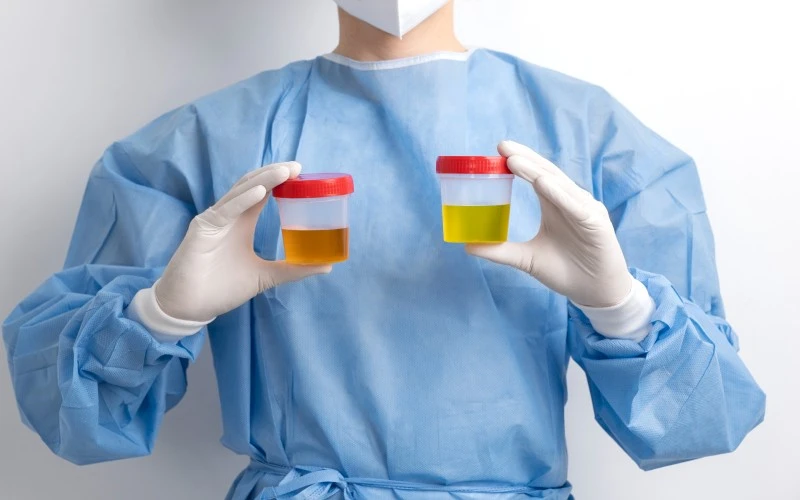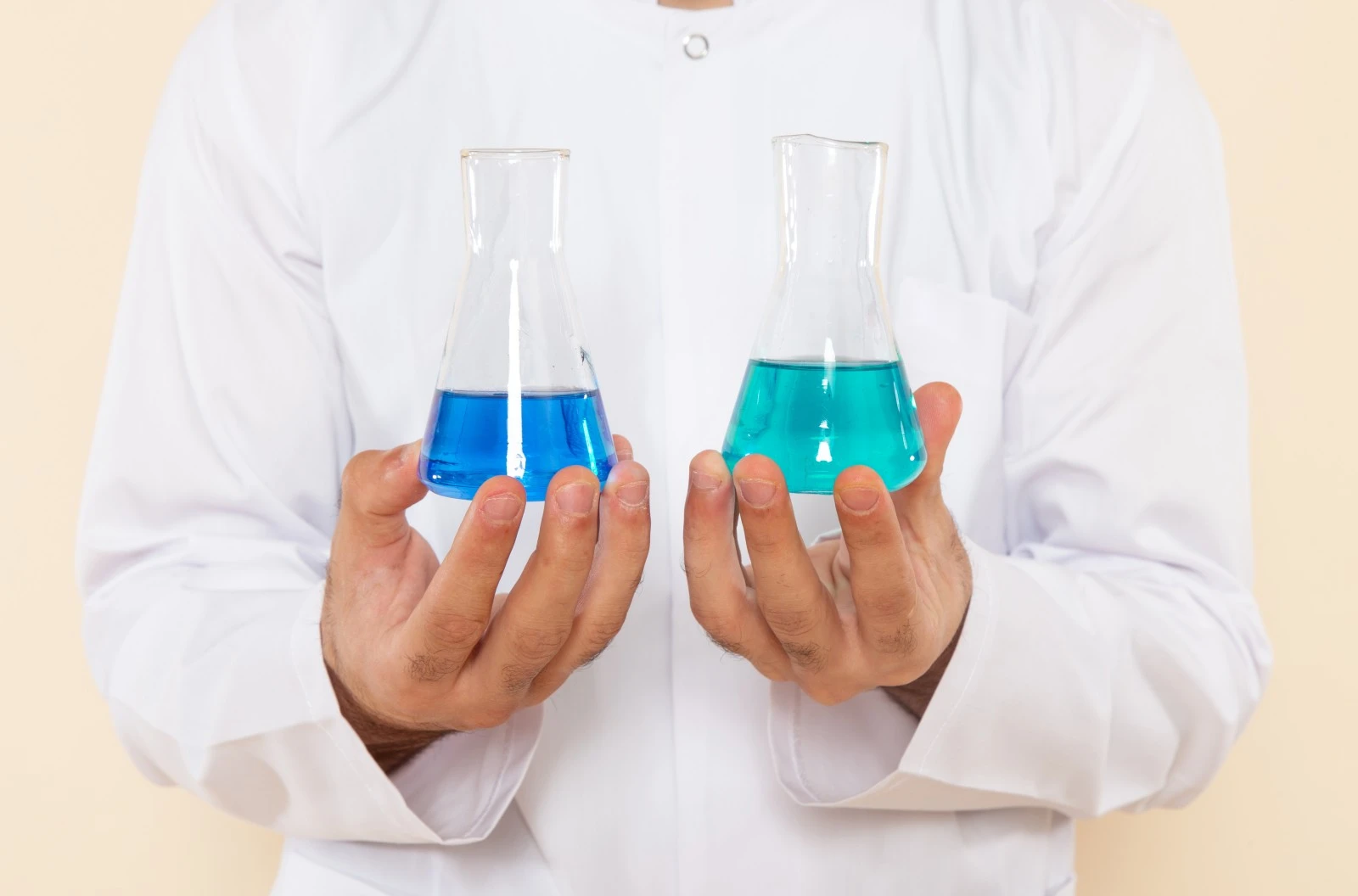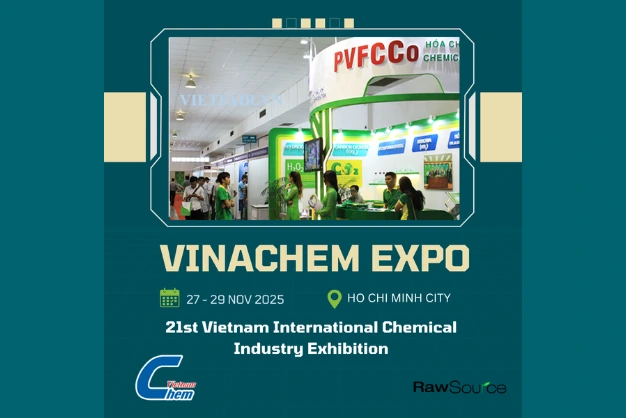TABLE OF CONTENTS
TABLE OF CONTENTS
In the diverse world of solvents and disinfectants, understanding the nuances between different types of alcohol and related compounds is essential for both industry professionals and everyday consumers. From the formulation of personal care products to applications in gardening and cleaning, the choice of solvent can significantly impact effectiveness, safety, and environmental considerations. This blog delves into the specifics of propylene glycol versus various alcohols, with a closer look at the distinctions between propyl alcohol and isopropyl alcohol, exploring their suitability for plant care, and examining the fundamental reactions that occur when alcohol meets water. By comparing these substances, we aim to provide clarity on their uses, benefits, and limitations, equipping readers with the knowledge needed to make informed decisions in their professional tasks or daily lives. Join us as we navigate through the intricate details of these chemical compounds, shedding light on their practical implications and chemical behaviors.
Propylene Glycol vs Alcohol
When navigating the realm of chemical solvents, propylene glycol and alcohol emerge as key players, each with distinct properties and applications. Understanding the differences and similarities between these substances is crucial for making informed choices in their usage.
Propylene Glycol: Characteristics and Uses
Propylene glycol is a synthetic liquid substance that absorbs water. It is classified as a diol, or a compound containing two hydroxyl (OH) groups. Colorless, odorless, and possessing a faintly sweet taste, propylene glycol is recognized for its versatility. It is primarily used in the food and beverage industry as a food additive due to its ability to dissolve certain additives more effectively than water. Additionally, its non-toxic nature makes it a common ingredient in pharmaceuticals and cosmetics, serving as a solvent, humectant, and emulsifier. In industrial settings, propylene glycol is utilized as an antifreeze when leakage might lead to contact with food or human skin, due to its lower toxicity compared to ethylene glycol.
Alcohol: A Broad Category with Varied Applications
The term “alcohol” encompasses a wide range of organic compounds, characterized by the presence of one or more hydroxyl groups attached to a carbon atom. In this context, we often refer to ethanol (ethyl alcohol) and isopropyl alcohol (isopropanol) as the most common types. Ethanol is widely used in beverages, as a solvent in the pharmaceutical industry, and as a disinfectant in medical settings. Isopropyl alcohol, on the other hand, is a potent antiseptic and solvent, used extensively in cleaning agents, disinfectants, and personal care products. Both types of alcohol are known for their effectiveness in killing bacteria and viruses on surfaces, making them invaluable in sanitation efforts.
Comparative Insights
While propylene glycol and alcohols like ethanol and isopropyl alcohol share common ground as solvents, their chemical properties and safety profiles dictate their specific uses. Propylene glycol’s low toxicity is suited for products requiring direct contact with skin or ingestion, whereas alcohols, with their quick-evaporating nature and antimicrobial properties, are preferred in sanitization and industrial cleaning. The choice between these substances often depends on the application’s requirements for safety, effectiveness, and environmental impact.
Both propylene glycol and alcohol have essential roles in various industries, dictated by their unique properties. Recognizing the differences between them enables professionals and consumers to select the most appropriate solvent for their specific needs, ensuring safety and efficiency in its application.
Propyl Alcohol vs Isopropyl Alcohol
In the diverse landscape of alcohols used across industries for various applications, propyl alcohol and isopropyl alcohol stand out for their specific properties and uses. Understanding the distinctions between these two compounds is essential for their safe and effective application.
Propyl Alcohol: Composition and Applications
Propyl alcohol, also known as 1-propanol or n-propanol, is a primary alcohol with the chemical formula C₃H₈O. It features a three-carbon chain with the hydroxyl group (-OH) connected to the first carbon, contributing to its classification as a primary alcohol. This structural configuration renders propyl alcohol suitable for use as a solvent in the pharmaceutical, cosmetics, and chemical manufacturing industries. Its ability to dissolve a wide range of non-polar substances makes it valuable in the production of lotions, perfumes, and other personal care products. Furthermore, propyl alcohol serves as an intermediate in the synthesis of other chemicals, playing a critical role in creating plastics, coatings, and adhesives.
Isopropyl Alcohol: Characteristics and Widespread Use
Isopropyl alcohol, or 2-propanol, differs from propyl alcohol in the position of its hydroxyl group, attached to the second carbon of the three-carbon chain, making it a secondary alcohol. This slight structural variation significantly influences its properties and applications. Isopropyl alcohol is renowned for its effectiveness as an antiseptic and disinfectant, widely used in healthcare settings for sanitizing surfaces and as a rubbing alcohol for its antimicrobial properties. Its rapid evaporation rate and ability to dissolve a broad array of non-polar compounds also make it a preferred solvent in the cleaning, cosmetic, and pharmaceutical industries. Additionally, isopropyl alcohol finds application as a de-icing agent and a solvent in the paint and varnish industry.
Key Differences and Considerations
The primary distinction between propyl and isopropyl alcohol lies in their chemical structure, influencing their solubility, volatility, and toxicity. Isopropyl alcohol’s position as a secondary alcohol makes it more effective for disinfection and sanitation purposes due to its higher volatility and excellent antimicrobial properties. In contrast, propyl alcohol’s use as a solvent is driven by its efficacy in dissolving oils and other substances for product formulations.
Both propyl and isopropyl alcohol play indispensable roles in their respective domains. Their selection depends on the specific requirements of the application, including the desired solvent properties, safety considerations, and environmental impact. Understanding these nuances ensures their responsible and effective use across a spectrum of industries.


Is Isopropyl Alcohol Good for Plants?
The use of isopropyl alcohol in gardening and plant care has garnered attention for its potential benefits in pest control and disease management. Understanding how and when to use isopropyl alcohol can make a significant difference in maintaining healthy plants.
Pest Control
Isopropyl alcohol is effective against a variety of plant pests, including aphids, mealybugs, and spider mites. When applied directly to pests, it acts quickly to dehydrate and kill them, offering a rapid solution to infestations. Gardeners often use a diluted solution of isopropyl alcohol and water—typically a mixture of 70% isopropyl alcohol with 30% water—sprayed directly onto the affected areas of the plant. This method is especially useful for treating localized infestations without resorting to harsh chemical pesticides.
Fungal Diseases
Beyond pest control, isopropyl alcohol can help manage fungal diseases affecting plants. By applying a diluted isopropyl alcohol solution to the leaves and stems, gardeners can reduce fungal growth and prevent the spread of disease. However, it’s crucial to use this treatment sparingly and monitor the plant’s response, as overuse can lead to leaf burn or damage.
Precautions and Best Practices
While isopropyl alcohol can be beneficial for plants, it’s essential to use it with care to avoid harm
Isopropyl alcohol can be a useful tool in the gardener’s arsenal for combating pests and diseases. However, its effectiveness and safety depend on proper dilution, application, and adherence to best practices. By incorporating isopropyl alcohol into plant care routines judiciously, gardeners can enjoy healthier plants without relying extensively on chemical treatments, striking a balance between natural plant care and effective pest management.
What Happens When Alcohol Reacts with Water?
The interaction between alcohol and water is a subject of interest not only in chemistry but also in various practical applications. Understanding the fundamental principles of this reaction can provide insights into the behavior of alcoholic solutions in different contexts.
Molecular Interaction and Solubility
When alcohol is mixed with water, the two liquids form a homogeneous solution due to the formation of hydrogen bonds between the hydroxyl groups (-OH) of the alcohol molecules and the water molecules. This interaction is critical in determining the solubility of alcohol in water. Smaller alcohol molecules, such as methanol and ethanol, are completely miscible with water in all proportions, primarily due to their ability to form extensive hydrogen bonding networks with water.
Volume Contraction
An interesting phenomenon observed when mixing alcohol with water is volume contraction. The total volume of the solution is often less than the sum of the individual volumes of alcohol and water before mixing. This occurs because the molecules of alcohol fit into the spaces between water molecules more efficiently, leading to a decrease in the overall volume of the solution.
Effect on Boiling and Freezing Points
The addition of alcohol to water also affects the solution’s boiling and freezing points. Alcohol lowers the freezing point of the water, which is why alcoholic solutions remain liquid at temperatures where pure water would freeze. Conversely, the boiling point of the solution increases slightly compared to pure water, although this effect is more pronounced with higher concentrations of alcohol.
Implications in Various Fields
The interaction between alcohol and water has implications in several areas, from the manufacturing of alcoholic beverages to pharmaceuticals and antifreeze solutions. In the beverage industry, the solubility of alcohol in water is fundamental to the production and dilution of spirits. In pharmaceuticals, alcohol-water mixtures are used as solvents to deliver medication effectively. Additionally, the freezing point depression property of alcohol-water mixtures makes them useful as antifreeze agents in colder climates.
The reaction between alcohol and water is characterized by molecular interactions that lead to solubility, volume contraction, and changes in physical properties such as boiling and freezing points. These interactions have significant practical applications across various industries, highlighting the importance of understanding the chemistry behind alcohol and water mixtures.
Conclusion
In exploring the nuances of alcohols and their interactions, especially in comparison and in combination with water, we uncover a rich tapestry of chemical behavior that has profound implications across various fields. From the detailed comparison of propylene glycol with alcohols, to understanding the distinct roles of propyl and isopropyl alcohol, and the intriguing effects of alcohol-water mixtures, this article sheds light on the fundamental principles guiding their applications. Recognizing these chemical properties enhances our ability to utilize these substances responsibly and innovatively, ensuring their benefits are maximized in industry, healthcare, and everyday life.
FAQs
Lorem ipsum dolor sit amet, consectetur adipiscing elit. Ut elit tellus, luctus nec ullamcorper mattis, pulvinar dapibus leo.
Propylene glycol and alcohol serve different purposes based on their chemical properties. Propylene glycol is often used as a food additive, moisturizer in cosmetics, and an antifreeze agent due to its non-toxic nature and ability to absorb water. Alcohols like ethanol are used as disinfectants and solvents. Their interchangeability depends on the product’s intended use and safety considerations.
The main difference lies in their structure and subsequent properties. Propyl alcohol, or n-propanol, is a primary alcohol with a three-carbon chain and the hydroxyl group connected at the end. Isopropyl alcohol, or isopropanol, is a secondary alcohol with the hydroxyl group attached to the second carbon. This difference affects their applications, with isopropyl alcohol being more commonly used as a disinfectant.
While isopropyl alcohol can be effective in treating pests on plants, it must be used cautiously. Some plants may be sensitive to alcohol, leading to leaf burn or damage. It’s recommended to dilute isopropyl alcohol with water and test on a small area before full application.
Volume contraction occurs because alcohol molecules, being smaller, fit into the spaces between water molecules more efficiently. This closer packing reduces the total volume of the mixture compared to the sum of the individual volumes of alcohol and water.
Adding alcohol to water lowers the freezing point of the mixture, making it useful as an antifreeze. The boiling point increases slightly, but this effect is more noticeable with higher concentrations of alcohol. These changes are important for applications requiring temperature control.
No, isopropyl alcohol should not be ingested. Despite its antiseptic properties, it is toxic and can cause severe poisoning if consumed. For internal medical purposes, only substances deemed safe for ingestion by health authorities should be used.
Contact Us
Questions or looking for a quote?





